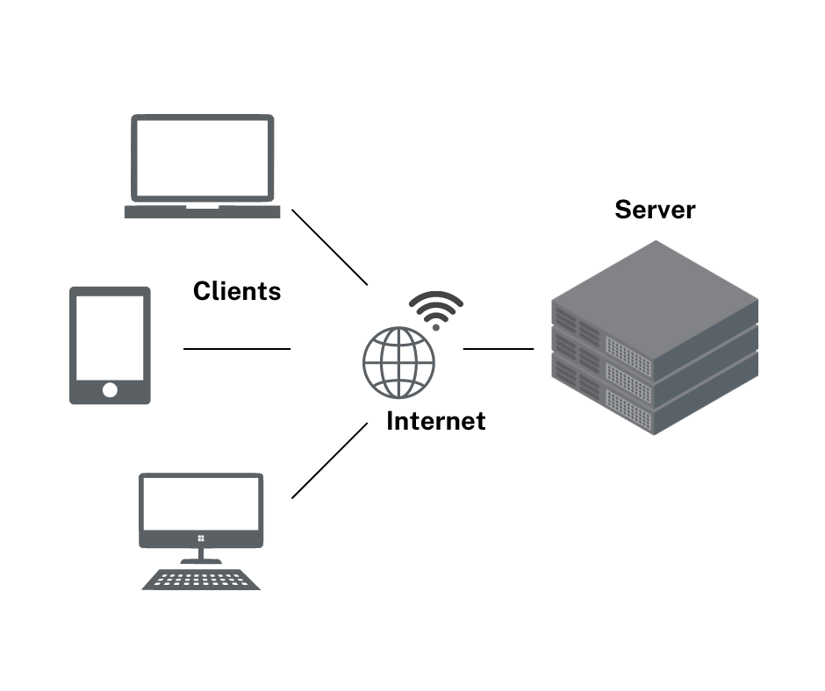You are viewing our site as a Broker, Switch Your View:
Agent | Broker Reset Filters to Default Back to ListWhat Are Webhooks and Why Are They So Important for Real Estate?
November 20 2022
 Real estate runs on data. Teams advise their customers about crucial decisions based on their access to up-to-the-minute data. The accuracy and timeliness of MLS data are vitally important to the industry.
Real estate runs on data. Teams advise their customers about crucial decisions based on their access to up-to-the-minute data. The accuracy and timeliness of MLS data are vitally important to the industry.
If you haven't been following developments around MLS data delivery closely, you might not understand exactly how it's changing or what it means for you and your business. In this post, we take a dive into the technical side of MLS data delivery, so you understand the changes that are coming and what they could mean for your business.
The importance of MLS data refreshes
Brokers, agents, and their customers need to know essential information, like:
- When properties list
- When prices change
- When listings already have an offer
- When listings are under contract
- When listings are taken off the market
Incorrect (or delayed) information can have a serious impact on the ability to close deals. The consequences can be serious!
As a data aggregator, one of the most common questions we get at Constellation1 is, "How often do you refresh your data?" That's because everyone wants the latest and freshest data. But how is MLS data updated in the first place?
How does MLS data get updated?
Multiple listing services (MLSs) are vast networks of regional databases updated by individual agents and admins. The most accurate, up-to-date information is available in the MLS at any time. But what happens when you don't have direct access to an MLS, or if you're trying to work with multiple MLSs at the same time?
The solution is putting all your data in one place, which involves setting up data feeds and putting them together. This is a lot trickier than it sounds, and then there's the question of how updated MLS data gets from the database to your computer. Until very recently, the only answer was polling.
What is polling?
If you thought we were going to be talking about elections, think again! In information technology, polling is a technique where a client (in the IT sense of the word) "asks" or polls a server for new data. Think of it like calling up your grandma to ask her how she's doing. Here's a diagram to show how clients and servers relate to each other:

In the mid-aughts, polling was implemented as the industry standard for updating MLS data. If you had an MLS feed, your system would poll the server the MLS database was hosted on at regular intervals. The industry standard has been every 15 minutes, but some servers and sites might do it more or less frequently, even as little as once a day!
To continue the grandma analogy, polling is a little bit like calling her every 15 minutes and asking if she has any updates. If she does, she tells you, and if she doesn't, she doesn't say anything. You hang up and wait another 15 minutes, and so on.
The issue with polling is that you're using resources inefficiently. You're calling your grandma a lot, spending time when there might not be any updates. You might poll four times in one hour and not get any updates, but then get an avalanche of changes and not learn about them until 14 minutes later. This has serious business consequences.
As the demand for real-time data has skyrocketed in recent years, polling has put a strain on data providers and their teams. Thankfully, technology has moved on, and the real estate industry is catching up. The solution: webhooks.
What are webhooks and what are the implications for real estate?
 If polling can be compared to calling your grandma every 15 minutes for an update, webhooks can be compared to your grandma calling you when she has something to report (or sending you a text message), whether that's every five minutes or five hours (or longer). Webhooks are a technique for servers to provide clients (again, in the IT sense of the word) with real-time information as it happens. In fact, you're probably already familiar with webhooks: if you've ever received a push notification on your phone, you've been on the receiving end of a webhook: a real-time notification of an update as it happens.
If polling can be compared to calling your grandma every 15 minutes for an update, webhooks can be compared to your grandma calling you when she has something to report (or sending you a text message), whether that's every five minutes or five hours (or longer). Webhooks are a technique for servers to provide clients (again, in the IT sense of the word) with real-time information as it happens. In fact, you're probably already familiar with webhooks: if you've ever received a push notification on your phone, you've been on the receiving end of a webhook: a real-time notification of an update as it happens.
It's hard to understate what a big deal this is for the real estate industry. Imagine your system receiving text messages and updating key information almost instantaneously. Webhooks improve on all the benefits of polling and eliminate the drawbacks, which include a huge amount of resources to ensure it goes smoothly. Now, MLS data can update in near real-time, with no more lag between polling times. The result: better, more accurate data that's easier (and cheaper) to get.
Webhooks: the new RESO standard
The Real Estate Standards Organization (RESO) helps set standards for the entire industry, including MLS data. It has recommended webhooks as the way of the future, improving the delivery and availability of data across the real estate industry. Not only that, webhooks will allow for faster data speeds, fewer data errors and lags, and lower costs thanks to less IT infrastructure and personnel, resulting in a win-win-win for MLSs, brokerages, and consumers.
Leading the way in webhook implementation
We at Constellation1 are the real estate industry's data experts, and we're continuously seeking to innovate our technology and improve our services for our customers. We've become an industry leader in the implementation of webhooks, as we reported in a recent press release and announced at the RESO 2022 fall conference.
We initially launched webhooks as a pilot project with our friends at RE/MAX. Webhooks aren't a new technology, but their application in real estate is, and RE/MAX helped test the concept with us to prove that it works. You can read more about it here.
If you're interested in learning more, check out the video below of our presentation at RESO 2022 with Rick Herrera, Vice President of R&D, Data Services and Kevin Yao, Senior Cloud Engineer.
To view the original article, visit the Constellation1 blog.









